These premises were first acquired in 1973. At that time, the building accommodated William Perring & Co Ltd, House Furnishers, and had done so since at least 1932. J.J. Moon’s opened on High Road around 1989/90 and is named after a fictional character, simply playing on the George Orwell ‘Moon Under Water’ theme of some of the company’s earliest pubs.
Prints and text about Wembley Park.
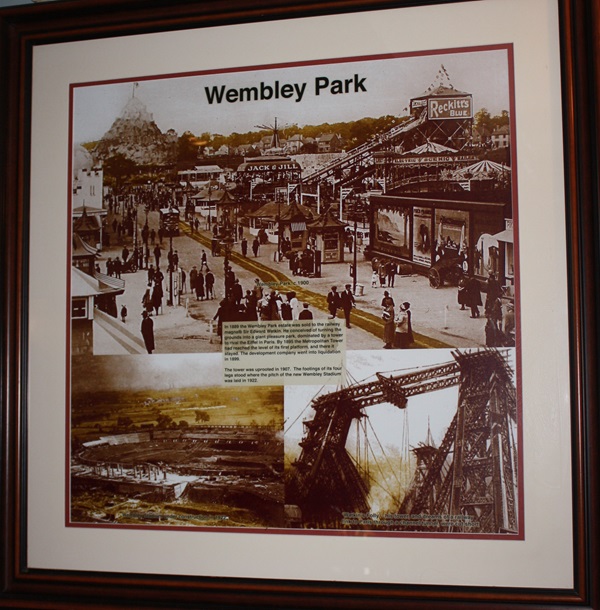
The text reads: In 1889 the Wembley Park estate was sold to the railway magnate Sir Edward Watkin. He conceived of turning the grounds into a giant pleasure park, dominated by a tower to rival the Eiffel in Paris. By 1895 the Metropolitan Tower had reached the level of its first platform, and there it stayed. The development company went into liquidation in 1899.
The tower was uprooted in 1907. The footing of its four legs stood where the pitch of the new Wembley Stadium was laid in 1922.
Photographs and text about Wembley Green.
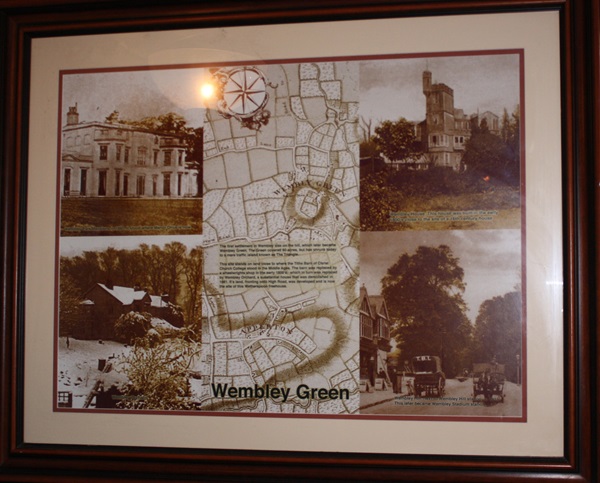
The text reads: The first settlement in Wembley was on the hill, which later became Wembley Green. The Green covered 60 acers, but has shrunk today to a mere traffic island known as The Triangle.
This site stands on land close to where the Tithe Barn of Christ Church College stood in the Middle Ages. The barn was replaced by a wheelwrights shop in the early 1800s, which in turn was replaced by Wembley Orchard, a substantial house that was demolished in 1881. Its land, fronting onto High Road, was developed and is now the site of this Wetherspoon freehouse.
Prints and text about the Copland legacy.
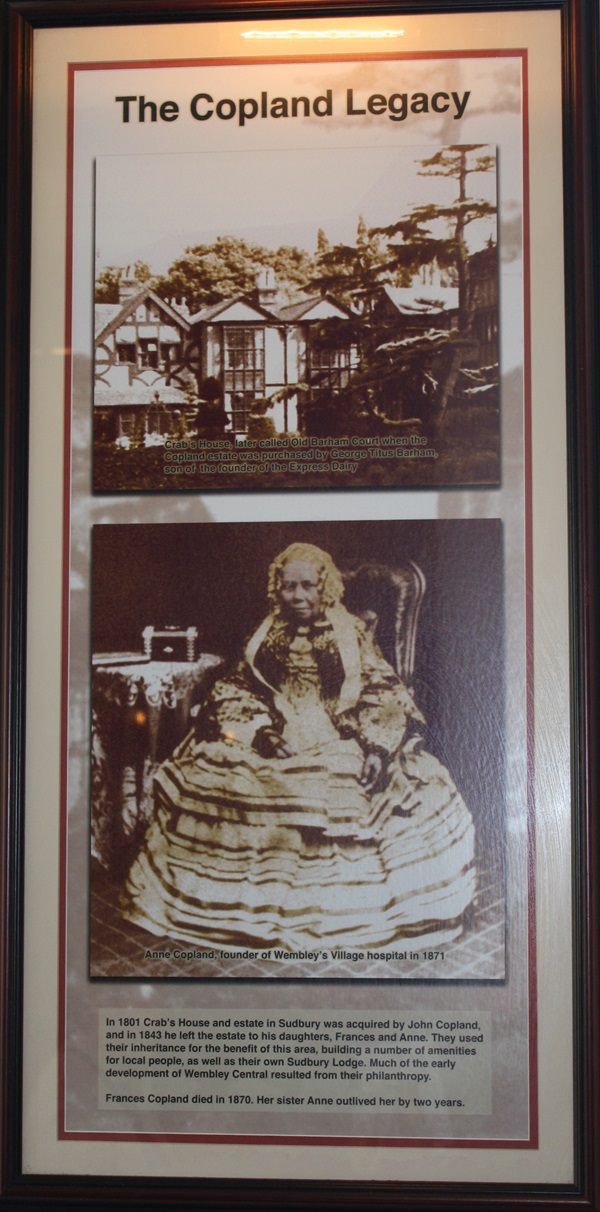
The text reads: In 1801 Crab’s House and estate in Sudbury was acquired by John Copland, and in 1843 he left the estate to his daughters, Frances and Anne. They used their inheritance for the benefit of this area, building a number of amenities for local people, as well as their own Sudbury Lodge. Much of the early development of Wembley Central resulted from their philanthropy.
Frances Copland died in 1870. Her sister Anne outlived her by two years.
Prints and text about 397 High Road.
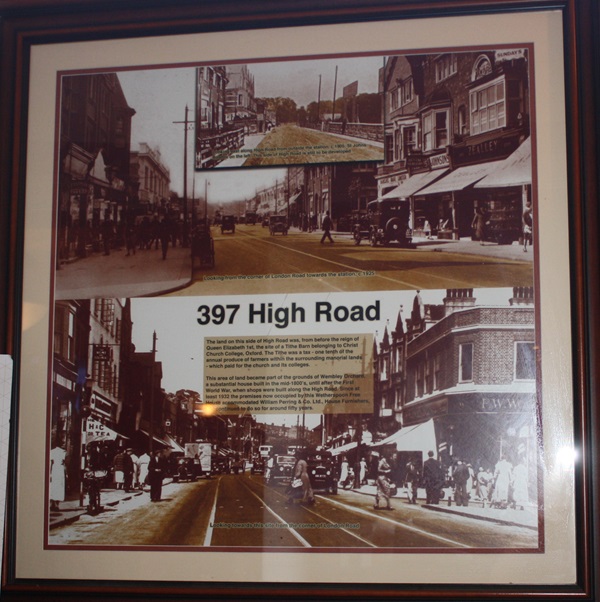
The text reads: The land on this side of High Road was, from before the reign of Barn belonging to Queen Elizabeth 1st, the site of a Tithe Barn belonging to Christ Church College, Oxford. The Tithe was a tax – one tenth of the annual produce of farmers within the surrounding manorial lands – which paid for the church and its colleges.
This area of land became part of the grounds of Wembley Orchard a substantial house built along the High Road. Since at least 1932 the premises now occupied by this Wetherspoon freehouse accommodated William Perring & Co. Ltd., House Furnishers, which continued to do so for around fifty years.
Prints and text about George Barnham.
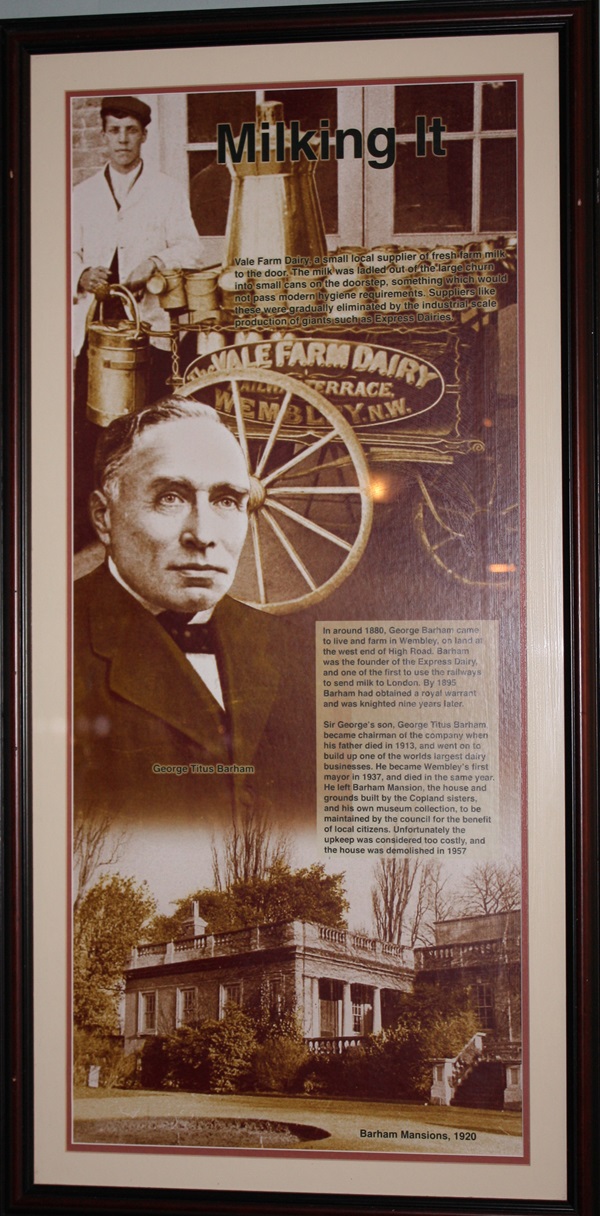
The text reads: In around 1880, George Barham came to live and farm in Wembley, on land at the west end of High Road. Barham was the founder of the Express Dairy, and one of the first to use the railways to send milk to London. By 1895 Barham had obtained a royal warrant and was knighted nine years later.
Sir George’s son George Titus Barham became chairman of the company when his father died in 1913, and went on to build up one of the worlds largest dairy businesses. He became Wembley’s first mayor in 1937, and died in the same year. He left Barham Mansion, the house and grounds built by the Copland sisters, and his own museum collection, to be maintained by the council for the benefit of local citizens. Unfortunately the up keep was considered too costly, and the house was demolished in 1957.
Prints and text about land and buildings in Wembley.
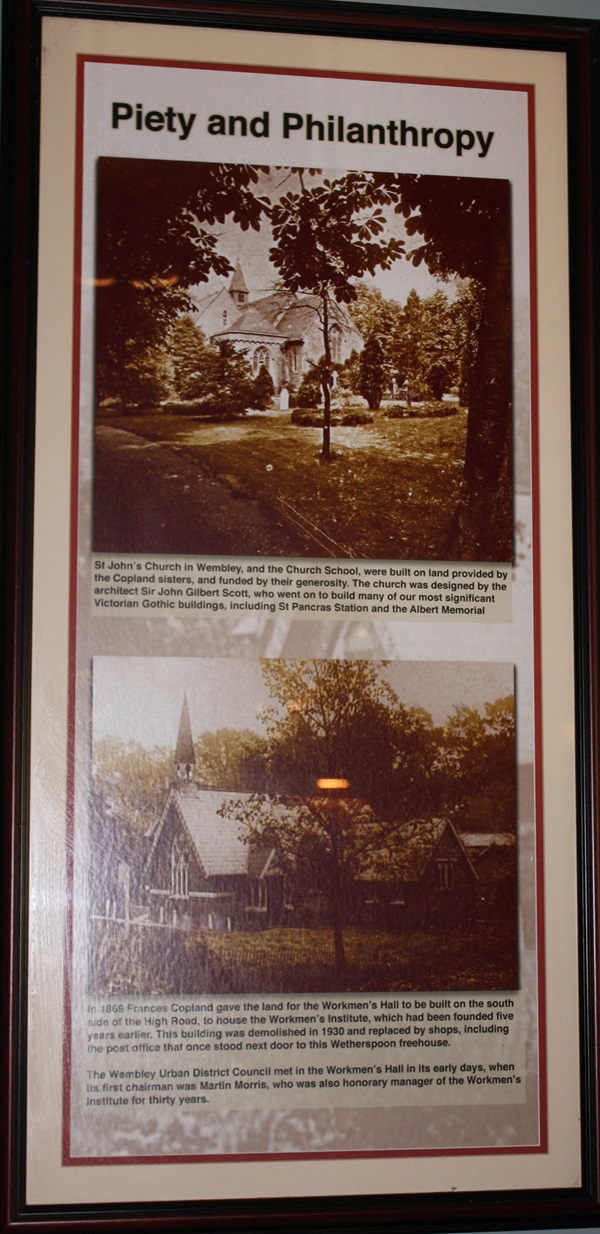
The text reads: St John’s Church in Wembley, and the Church School, were built on land provided by the Copland sisters, and funded by their generosity. The church was designed by the architect Sir John Gilbert Scott, who went on to build many of our most significant Victorian Gothic buildings, including St Pancras Station and the Albert Memorial.
In 1869 Frances Copland gave the land for the Workmen’s Hall to be built on the south side of the High Road, to house the Workmen’s Institute, which had been founded five years earlier. This building was demolished in 1930 and replaced by shops, including the post office that once stood next door to this Wetherspoon freehouse.
The Wembley Urban District Council met in the Workmen’s Hall in its early days, when its first chairman was Martin Morris, who also honorary manager of the Workmen’s Institute for thirty years.
Photographs, an illustration and text about Wembley Stadium.
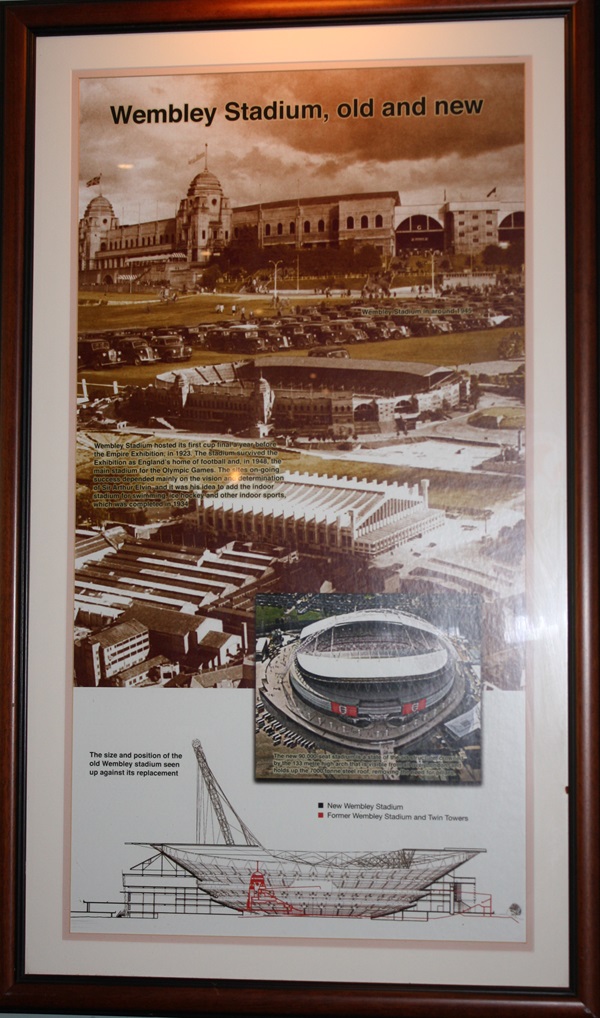
The text reads: Wembley Stadium hosted its first cup final a year before the Empire Exhibition, in 1923. The stadium survived the Exhibition as England’s home of football and, in 1948, the main stadium for the Olympic Games. The sites on-going success depended mainly on the vision and determination of Sir Arthur Elvin, and it was his idea to add the indoor stadium for swimming, ice hockey and other indoor sports, which was completed in 1934.
The new 90,000-seat stadium is a state of the art structure, crowned by the 133 metre high arch that is visible from all over London, and holds up the 7,000 tonne steel roof, removing the need for pillars.
Illustrations and text about The Empire Exhibition.
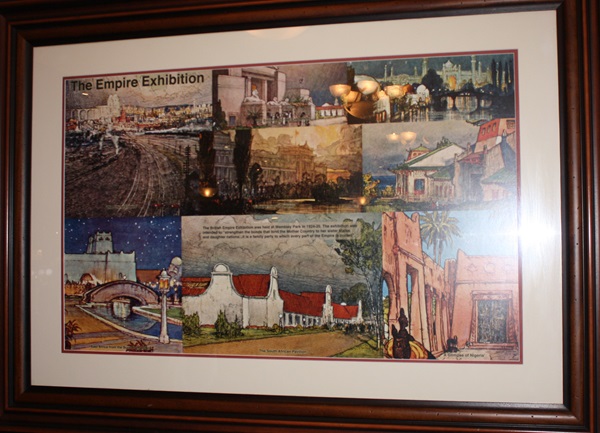
The text reads: The British Empire Exhibition was held at Wembley Park in 1924-25. The exhibition was intended to “strengthen the bonds that bind the Mother Country to her sister states and daughter nations…it is a family party to which every part of the Empire is invited”.
A print of Wembley Stadium.
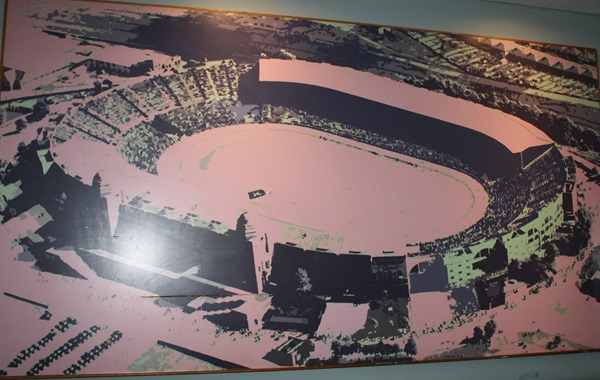
External photograph of the building – main entrance.
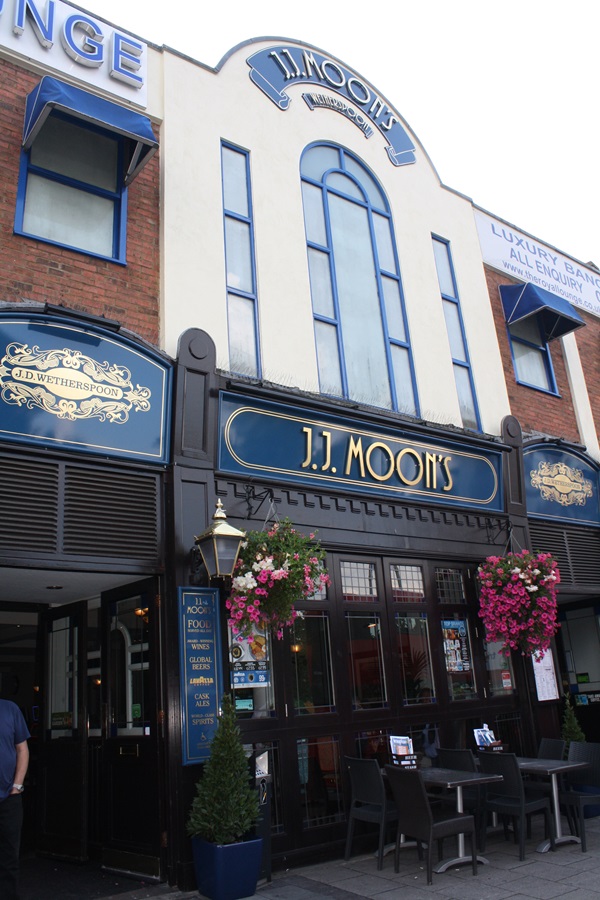
If you have information on the history of this pub, then we’d like you to share it with us. Please e-mail all information to: pubhistories@jdwetherspoon.co.uk